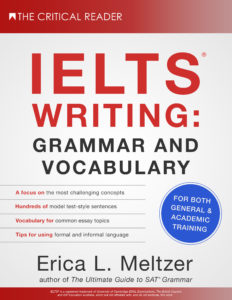Using since and for correctly isn’t all that difficult, but unfortunately the rules for these two words are often explained in overly complicated ways. So complicated, in fact, that very smart people whose English is basically perfect still occasionally get them wrong. In light of that fact, I’m going to try to simplify things here, while also covering the most common constructions as thoroughly as possible.
As you have probably learned, both since and for are normally paired with the present perfect: has or have + past participle, e.g., has been, has done, has increased. These constructions are used to indicate actions that began in the past and that are continuing into the present.
When you are communicating in English, however, you won’t normally have the time to stop and think about just when an action is beginning and ending. If your first language uses tenses different from the English ones to express equivalent concepts, you will also have to work to override your instincts. This is why even people who can recite the rules governing these words perfectly may struggle to apply them in practice.
Particularly in speech, knowing why something is right or wrong is much less useful than being able to produce correct constructions automatically. So if you want to use for and since properly, it is much more effective to stop thinking in terms of abstract concepts about time and starting thinking in terms of formulas.
Present Perfect + Since + Starting Time (hour, day or date, month, year, etc.)
Present Perfect + For + Duration (length of time an action has occurred)
We’re going to look at these concepts in depth in this post; however, if you can train yourself to adhere strictly to these formulas, you’ll rarely make mistakes.
Since
Let’s start by just looking at the types of words and phrases—specific moments in time—that can follow since.
- this morning
- 2pm
- yesterday
- last Tuesday
- last month
- February
- last year
- a couple of years ago
- the mid-20th century
Now, let’s look at some full sentences.
Correct: I’ve been awake since 6 o’clock this morning.
Correct: I’ve studied English since 2010.
Correct: I’ve lived in Toronto since last March.
Correct: Computers have played an important role in everyday life since the late twentieth century.
Now, there’s one more piece. Since can also be followed by a clause: subject + simple past verb (+ whatever else).
Correct: I’ve been studying English since I was 10 years old.
Correct: My parents have lived in Edinburgh since they moved to the UK.
You should practice saying sentences like this until you can produce them automatically. To reiterate: the goal is not to be able to understand or explain why the construction is correct; the goal is to use it correctly.
Remember that we cannot replace the present perfect with the simple present. Also note that in standard US/UK English, we also cannot replace since with from (as is common in some other English dialects).
Incorrect: I study English since 2010.
Incorrect: I live in Toronto from last March.
And when a clause follows since, the verb cannot be in the present tense.
Incorrect: I’ve been studying English since I am 10 years old.
Incorrect: My parents have lived in Edinburgh since they move to the UK.
For
Like since, for is used with the present perfect. Unlike since, it is following a length or duration of time.
- a few minutes
- an hour
- three weeks
- a couple of months
- five years
- a decade
- a century
Now let’s look at some sentences. Again, you should practice repeating statements like these until you can say them automatically.
Correct: I’ve been awake for five hours.
Correct: I’ve lived in Toronto for six months.
Correct: I’ve studied English for a decade.
Correct: Computers have played an important role in everyday life for a quarter of a century.
And to reiterate: only for can be used with lengths of time. It cannot be replaced with since or during.
Incorrect: I’ve lived in Toronto since a year.
Incorrect: Computers have played an important role in everyday life during a quarter of a century.
Note that unlike since, for cannot be followed by a subject + verb. However, for can also be used with the simple past, to indicate that an action both began and ended in the past.
Correct: I lived in Toronto for six months. (= I left Toronto after six months)
Correct: I played basketball every weekend for a few months, but I had to stop when I injured my knee.
So, to recap, this time with some IELTS essay-style sentences:
Since + Starting Time
Present Perfect Only: Since the 1970s (starting time), companies have reduced their stockpiles of essential manufacturing components.
For + Duration
Present Perfect: For half a century (duration), companies have reduced their stockpiles of essential manufacturing components.
Simple Past: For several decades in the mid-20th century, companies maintained large stockpiles of essential manufacturing components.
